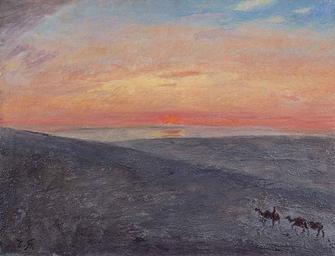Introduction
In the realm of photography, few genres evoke as much introspection and creativity as self-portrait photography. This unique form of art transcends mere representation; it intertwines personal narrative and aesthetic expression, inviting both the artist and the viewer to embark on a journey of self-discovery. The title “ Self Portraits as Fine Art: Merging Personal Narrative and Aesthetics” encapsulates this exploration, illustrating how self-portraits can be more than just images—they can be profound statements that reflect our innermost thoughts, emotions, and experiences.
As we delve deeper into the intricate world of self-portraits, we will explore various aspects such as their historical context, different styles, techniques used in capturing them, and how they serve as a medium for personal storytelling. Each section will unravel layers of meaning behind self-portraiture while providing practical tips for aspiring photographers looking to create their own compelling works.
Self Portraits Photography: An Overview
What is Self Portrait Photography?
At its core, self-portrait photography is a genre where the subject is also the photographer. It allows individuals to capture their likeness or express themselves creatively through imagery. But what truly sets this form apart is its ability to convey personal narratives. These portraits often act as mirrors reflecting not only physical appearances but also emotions, thoughts, and even societal commentary.
Historical Context of Self Portraits
The tradition of self-portraiture dates back centuries. Artists like Rembrandt and Van Gogh used self-portraits to explore their identities amidst ever-changing times. In contemporary settings, with the advent of digital technology and social media platforms—self-representation has taken on new forms. Today’s photographers use various methods from traditional film to digital techniques to create compelling narratives that resonate with audiences worldwide.
Different Types of Self Portraits
Self-portraits come in many forms—ranging from traditional representations to abstract interpretations. Here are some types worth noting:
Traditional Self-Portraits: Featuring the subject directly facing the camera. Abstract Self-Portraits: Utilizing creative techniques that emphasize emotion over realism. Faceless Self Portrayals: Focusing on body language or objects rather than facial features. Candid Self-Portraits: Capturing spontaneous moments that reveal authentic emotions. Conceptual Self-Portraits: Driven by a central idea or theme that tells a story.Understanding these types enhances one’s ability to convey personal narratives through imagery effectively.
Contemplative Photography in Self-Portraiture
What is Contemplative Photography?
In essence, contemplative photography invites us to pause and reflect deeply on what we see in front of us—be it an object or ourselves. This practice encourages mindfulness when creating images, allowing us to connect with our inner selves before pressing the shutter button.
Integrating Contemplative Practices in Self Portrait Photography
When embarking on a journey of self-discovery through portraiture, integrating contemplative practices can elevate your work significantly:
Mindful Observation: Take time to observe your surroundings without judgment. Emotional Awareness: Tune into your feelings during the shooting process—this can guide your composition choices. Intentional Framing: Consider what elements you want to include (or exclude) in your frame—each choice adds another layer to your narrative.These practices enable artists not only to capture images but also translate feelings into visual stories.
Creative Techniques for Capturing Self Portraits
Understanding Lighting in Self Portrait Photography
Lighting plays a crucial role in any form of photography—and it’s no different when it comes to capturing self-portraits:
Natural Light: Harnessing sunlight creates soft shadows that enhance facial features beautifully. Artificial Light Sources: Using lamps or studio lights offers control over mood and atmosphere. Golden Hour Magic: Shooting during dawn or dusk illuminates subjects with warm tones—a favorite among photographers.Experimentation with different lighting setups will yield diverse results while adding depth to your imagery.
Framing Your Composition Effectively
Composition determines how viewers perceive an image at first glance:
Rule of Thirds: Dividing your frame into thirds helps create balance within your shot. Leading Lines: Utilize natural lines within your environment (roads, tree branches) to draw attention toward yourself. Negative Space Usage: Leaving empty spaces around subjects can evoke feelings of solitude or contemplation.Consider these compositional techniques when planning your shots for impactful visuals!
Aesthetic Elements in Fine Art Photography
Choosing Backgrounds for Self Portraits
The backdrop you choose plays an essential role in enhancing aesthetics:
1. Nature Settings: Parks or forests offer organic beauty while harmonizing with human subjects. 2. Urban Landscapes: Cityscapes add vibrancy; consider contrasting textures against skin tones! 3. Minimalist Backgrounds: Simple walls allow focus solely on emotional expression without distractions.
Experimenting with varying backgrounds opens doors for creative storytelling through visuals!
Incorporating Props into Your Shots
Props can add layers of meaning beyond simple representation:
1. Personal Items: Incorporate objects significant to you—books or cherished mementos communicate identity powerfully! 2 . Clothing Choices : Wearing outfits associated with experiences connects viewers emotionally while conveying context visually! 3 . Artistic Accessories : Hats , scarves , or masks allow playful exploration showcasing versatility within styles!
These additions enrich narratives hidden within frames leaving lasting impressions upon audiences!
Exploring Abstract Self Portrait Photography Styles
Defining Abstract Self Portrait Photography?
Abstract self-portrait photography moves away from literal representations focusing instead on shapes , colors , textures conveying emotion over realism . The goal here isn’t perfection but genuine expression —creating intrigue through ambiguity inviting viewers’ interpretations .
Techniques For Creating Abstract Images?
Here are several methods photographers utilize when crafting abstract portraits :
1 . ***Double Exposure Techniques : Combining two photographs creates ethereal effects blurring lines between reality & imagination . 2 . ***Motion Blur : Capturing movement evokes energy transforming static moments into dynamic expressions . 3 . ***Color Manipulation : Experimenting post-process allows adjusting hues saturation creating dreamlike atmospheres .

By embracing abstraction , artists break traditional boundaries unleashing creativity unbound by conventions!
Faceless Self Portrait Ideas for Unique Expressions
While most self-portraiture emphasizes faces , faceless options provide fresh perspectives ! Here are http://wisdomvault165.mozellosite.com some captivating ideas :
1 . ***Body Language Focused Frames : Convey emotions using position gestures emphasizing how posture communicates feeling . 2 . ***Silhouettes Against Light Sources : Create mysterious allure showing outlines without revealing details enhancing intrigue ! 3 . ***Hands As Narrators : Close-ups featuring hands engaging activities (writing drawing etc.) tell stories through action rather than appearance .
These faceless approaches invite viewers’ imaginations sparking curiosity about individual narratives conveyed visually !
Creating Aesthetic Photos Wall for Displaying Your Work
Once you’ve created stunning artworks , displaying them thoughtfully amplifies impact! Consider these tips :
1 . ***Gallery-style Arrangements : Create cohesive themes grouping similar styles together establishing flow throughout space . 2 . ***Mixing Frame Sizes : Varying dimensions adds interest breaking monotony drawing attention towards focal points . 3 . ***Utilizing Color Palettes Harmoniously : Coordinating tones promotes unity across different pieces enhancing overall aesthetic appeal .
Transforming walls into galleries showcases artistry inspiring conversations around visual storytelling experiences shared across cultures!
Custom Photo Size Printing Options Available
When it comes time printing out masterpieces consider custom photo sizes tailored specifically designed match particular display needs ! Here’s why customization matters :
1 . 5x7 Pixel Dimensions* are perfect smaller prints ideal gifting sharing memories intimately captured moments ! 2 . Larger Custom Print Sizes* allow showcasing striking visuals commanding attention making statements within larger spaces .
Explore various available options ensuring best outcomes preserving authenticity captured moments while elevating overall presentations!
Conclusion
Self portraits encapsulate myriad narratives exploring depths individuality expressed artistically through lens ! By examining techniques integrating contemplative practices experimenting aesthetics harnessing creativity alongside technology artists carve paths uniquely theirs merging personal experiences artistry seamlessly manifesting realms dreams visions interpreted differently each viewer encounters them along way ! Each photograph tells story waiting shared inspiring connection fostering understanding amongst diverse audiences seeking glimpse lives lived behind lenses capturing fleeting beauty timelessly preserved within frame !
FAQs
1) What Is A Self Portrait?
A self portrait is an artistic representation created by an artist depicting themselves through various mediums such as painting photography etc., allowing insight into their identity perspective conveyed visually over time .

2) How Can I Start With Creative Self Portrait Photography?
Begin experimenting by choosing themes connecting personally incorporating props backgrounds revealing facets personality deciding whether go traditional abstract approach depending desired message communicate .

3) Why Are Faceless Self Portrayals Significant?
Faceless portrayals shift focus away from physicality emphasizing emotions actions instead inviting viewer interpretation encouraging deeper reflections upon meanings behind images conveyed via non-verbal cues !
4) How Does Contemplative Photography Enhance My Practice?
Contemplative practices enhance mindfulness fostering connections between artists subjects thereby enriching overall experience resulting more authentic meaningful expressions translating ideas vision effectively through art mediums employed .
5) What Are Some Popular Styles Of Fine Art Photography?
Popular styles include conceptual documentary landscape portraiture abstract photomontage each offering unique opportunities explore creativity interpret realities experienced individually culturally historically contextually relevant today !
6) Where Can I Find Custom Photo Print Sizes For My Work?
Many online services provide options custom photo size printing catering preferences needs ensuring quality preservation integrity artwork produced allowing flexibility showcasing creations beautifully presented within chosen environments !
By diving deep into "Self Portraits as Fine Art: Merging Personal Narrative and Aesthetics," we not only celebrate this genre's significance but also inspire artists everywhere embrace journeys exploring identities while crafting compelling narratives visually told!